Archives - Page 2
-
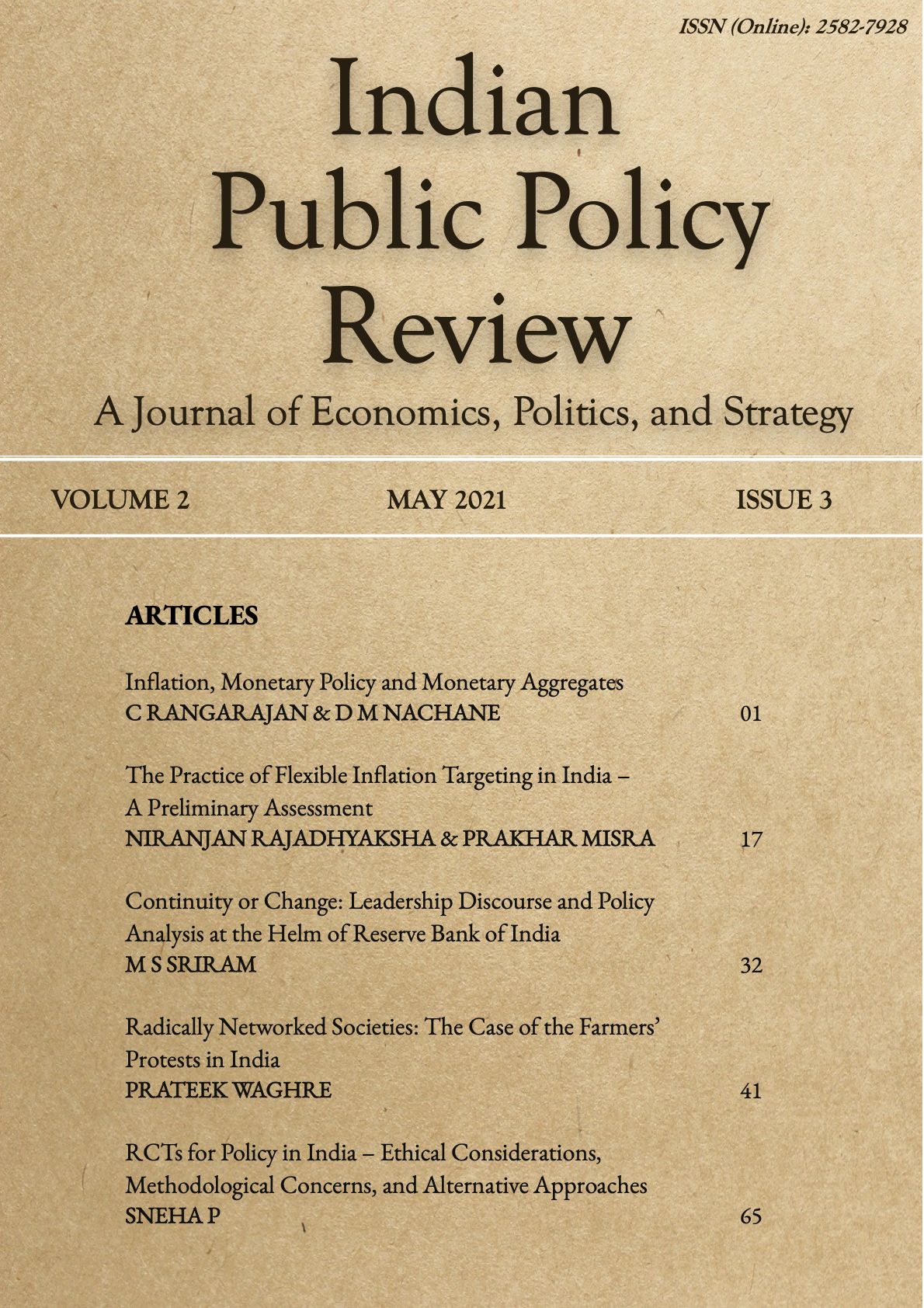
Indian Public Policy Review
Vol. 2 No. 3 (May-Jun) (2021)IPPR is a peer-reviewed, bi-monthly, online and an open-access journal, which will carry original, analytical, policy relevant papers, book reviews, and commentaries, inter alia, Economics, Political Science, International Relations and Security, Political and Defence Strategy, and Science and Technology Policy.
In this issue, C Rangarajan and D M Nachane examine the role of monetary aggregates in the determination of inflation, which has important implications for monetary policy. In their paper, Niranjan Rajadhyaksha and Prakhar Misra examine how the new flexible inflation targeting framework has worked in practice in India, five years after it was introduced. The paper by M S Sriram scrutinises the speeches delivered by RBI leadership and examines the policy discourse to understand the elements of continuity and change. Prateek Waghre analyses India’s ongoing farmer protests movement through the lens of the Radically Networked Societies (RNS) framework. Finally, Sneha P describes the various ethical and methodological considerations when choosing to adopt RCTs for policy decisions in the Indian context.
-
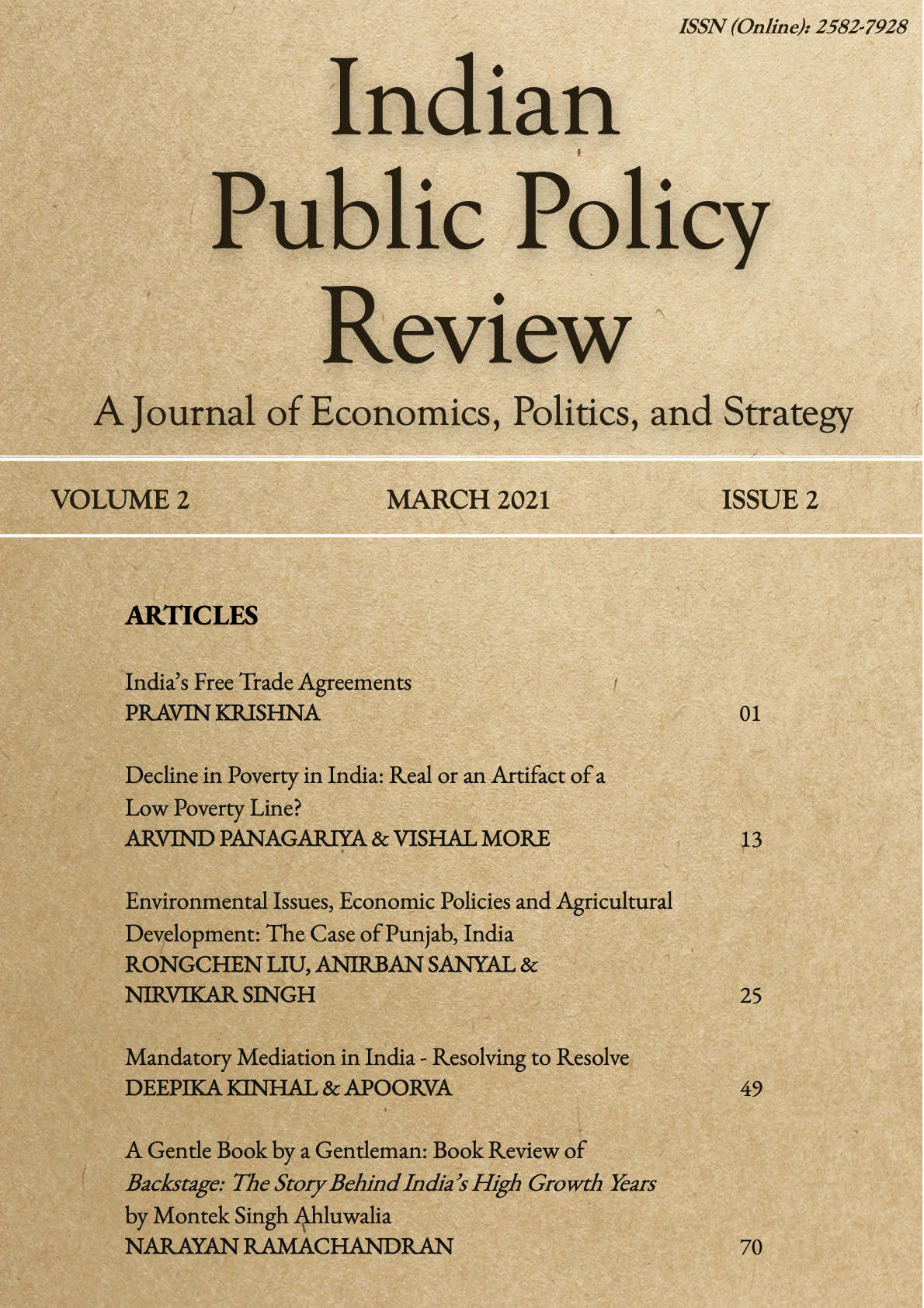
Indian Public Policy Review
Vol. 2 No. 2(Mar-Apr) (2021)IPPR is a peer-reviewed, bi-monthly, online and an open-access journal, which will carry original, analytical, policy relevant papers, book reviews, and commentaries, inter alia, Economics, Political Science, International Relations and Security, Political and Defence Strategy, and Science and Technology Policy.
In this issue, Pravin Krishna reviews India’s experience with Free Trade Agreements over the last two decades. Arvind Panagariya and Vishal More show that poverty reduction in India is not merely an artifact of a low poverty line. Liu, Sanyal and Singh analyse economic policy failures and its adverse impact on the environmental quality in Punjab. Deepika Kinhal and Apoorva explore the concept of mandatory mediation as a solution for reducing pendency in the traditional court system. Finally, Narayan Ramachandran reviews “Backstage: The Story Behind India’s High Growth Years” by Montek Singh Ahluwalia
-
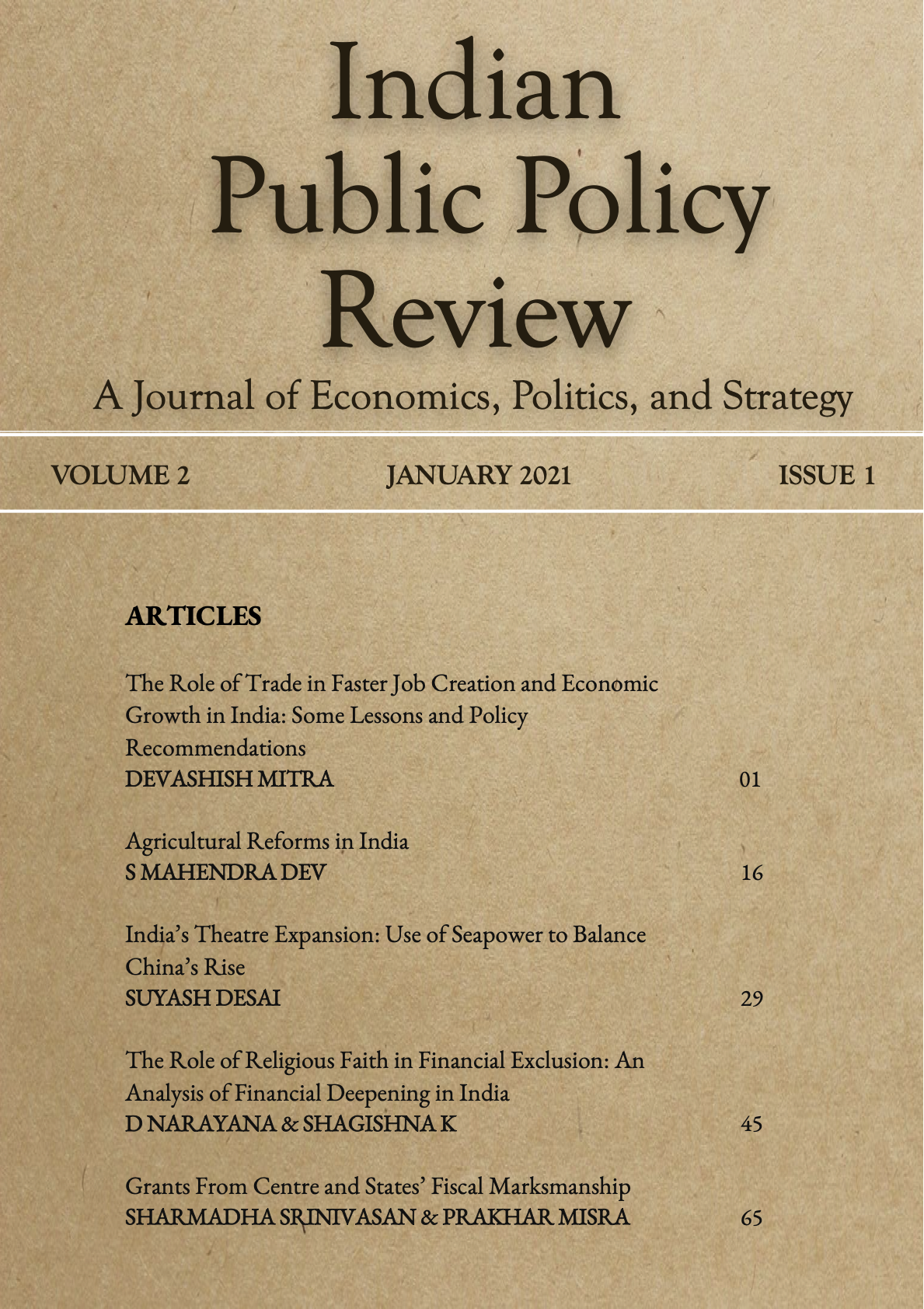
Indian Public Policy Review
Vol. 2 No. 1(Jan-Feb) (2021)IPPR is a peer-reviewed, bi-monthly, online and an open-access journal, which will carry original, analytical, policy relevant papers, book reviews, and commentaries, inter alia, Economics, Political Science, International Relations and Security, Political and Defence Strategy, and Science and Technology Policy.
In this issue, Devashish Mitra explores the role of trade in faster job creation and economic growth in India and provides policy recommendations to facilitate this. S Mahendra Dev’s article examines the recent agricultural laws and its impact on farmers’ income, while suggesting further reforms required in the sector. Suyash Desai’s paper argues that the development and demonstration of maritime power affords India the best way of managing China in the Indo-Pacific region. D Narayana and Shagishna K analyse the role of religious faith in financial exclusion in India. Finally, Sharmadha Srinivasan and Prakhar Misra aim to establish the issues with fiscal marksmanship of states’ revenue budgets.
-
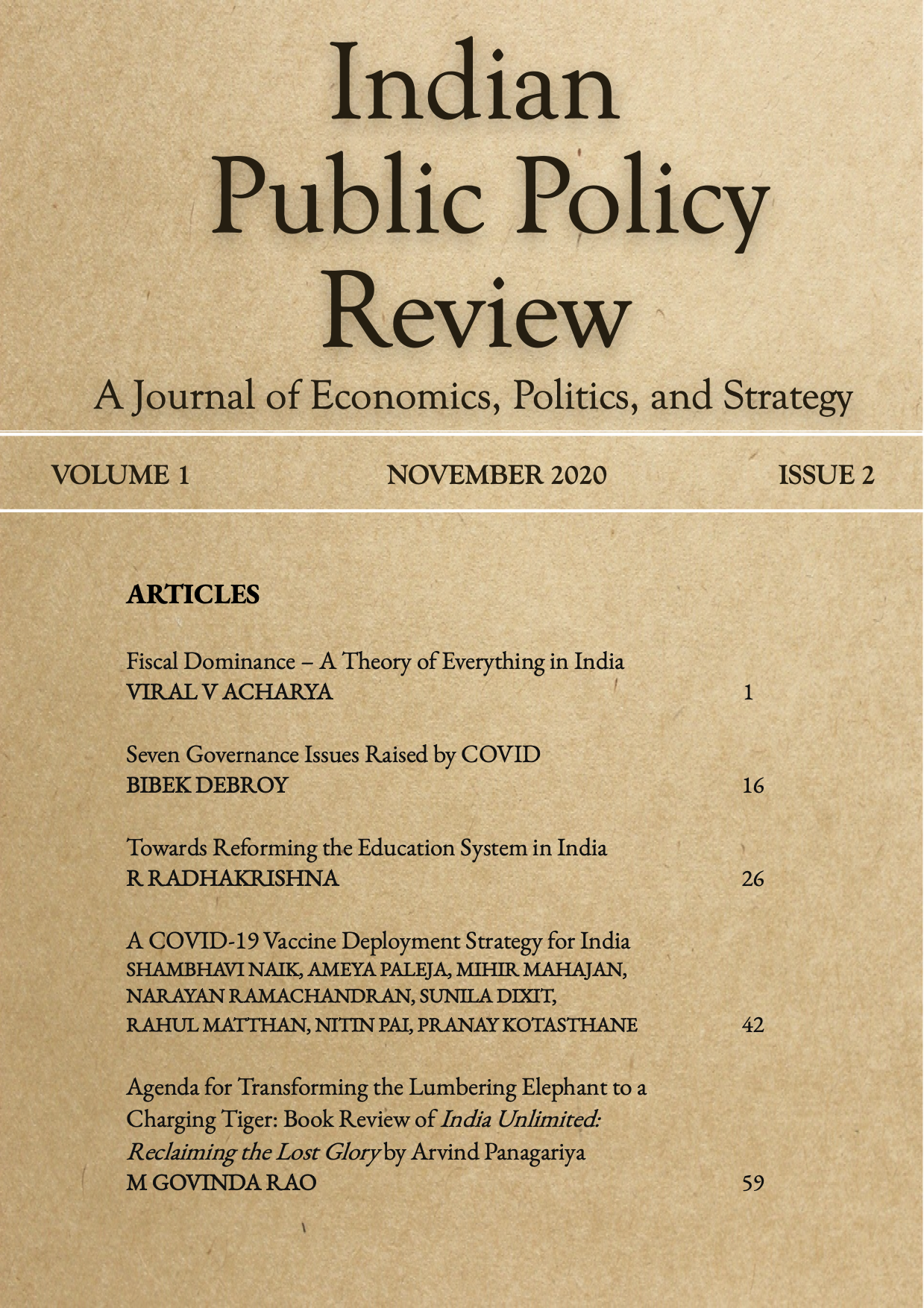
Indian Public Policy Review
Vol. 1 No. 2(Nov-Dec) (2020)IPPR is a peer-reviewed, bi-monthly, online and an open-access journal, which will carry original, analytical, policy relevant papers, book reviews, and commentaries, inter alia, Economics, Political Science, International Relations and Security, Political and Defence Strategy, and Science and Technology Policy.
The current issue has an article by Viral Acharya on the impact of fiscal dominance on financial stability, monetary policy, and the economy. Bibek Debroy's article outlines the Constitutional and governance issues to prepare the country for emergencies like the pandemic in the future. The performance of the Indian education system in its entirety is scrutinised in an article by R. Radhakrishna. The article on vaccination strategy by Shambhavi Naik et al. proposes a plan to vaccinate 80% of India’s population by December 2021. Govinda Rao reviews "India Unlimited: Reclaiming the Lost Glory" by Arvind Panagariya.
-
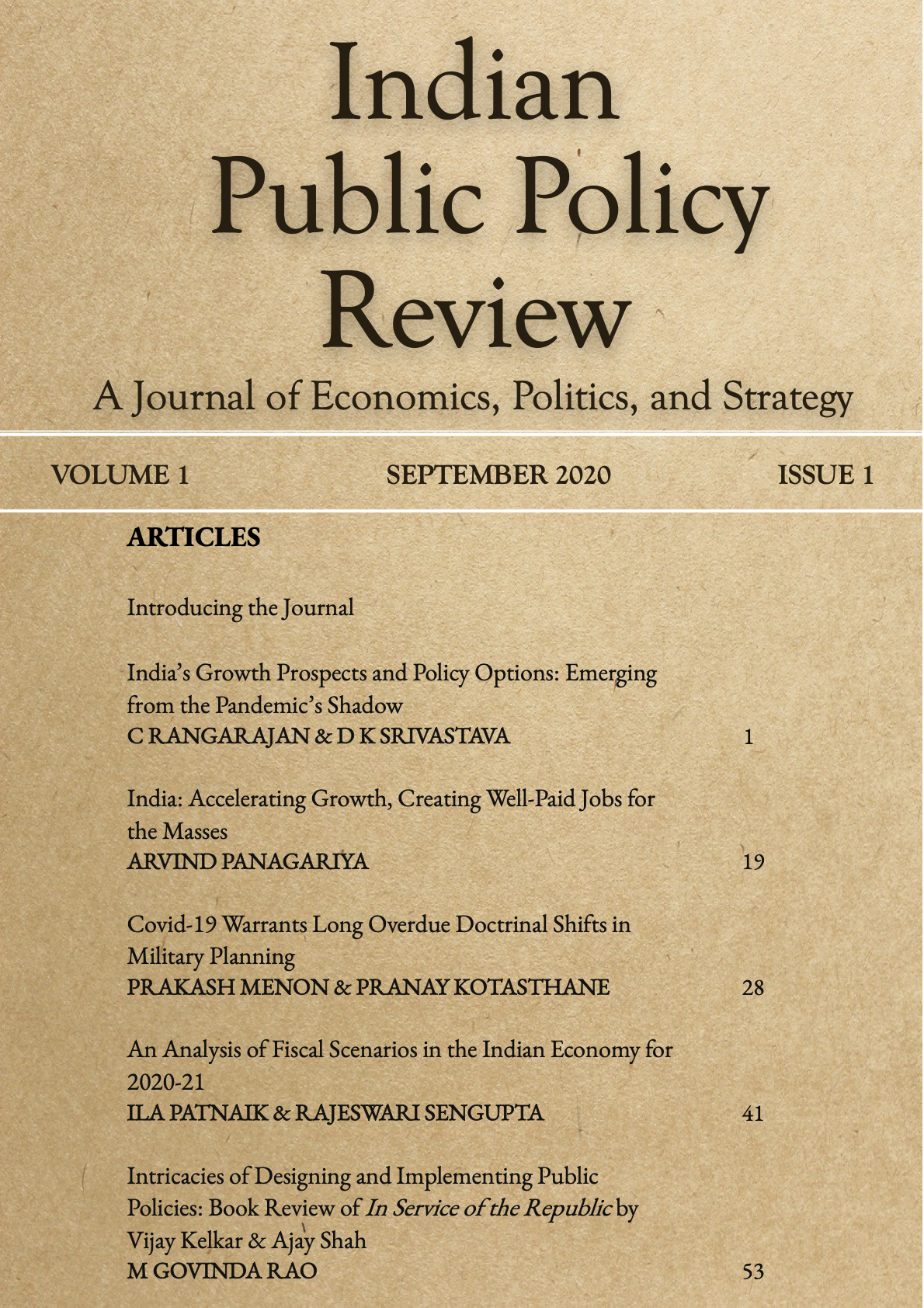
Indian Public Policy Review
Vol. 1 No. 1(Sep-Oct) (2020)IPPR is a peer-reviewed, bi-monthly, online, and an open-access journal, which will carry original, analytical, policy relevant papers, book reviews, and commentaries, inter alia, Economics, Political Science, International Relations and Security, Political and Defence Strategy, and Science and Technology Policy.
The current issue has Rangarajan – Srivastava article on the policy options for India to emerge from the pandemic, Panagariya’s article listing the reforms needed to achieve a fast pace of industrialisation and accelerate economic growth. Patnaik and Sengupta analyse the impact of the pandemic on India’s fiscal situation. Menon and Kotasthane emphasise the need to go beyond discussions on defence expenditure to make strategic shifts in military planning. Govinda Rao reviews the recent book by Kelkar and Shah, In Service of the Republic from the perspective of the role of the State in the market economy.

